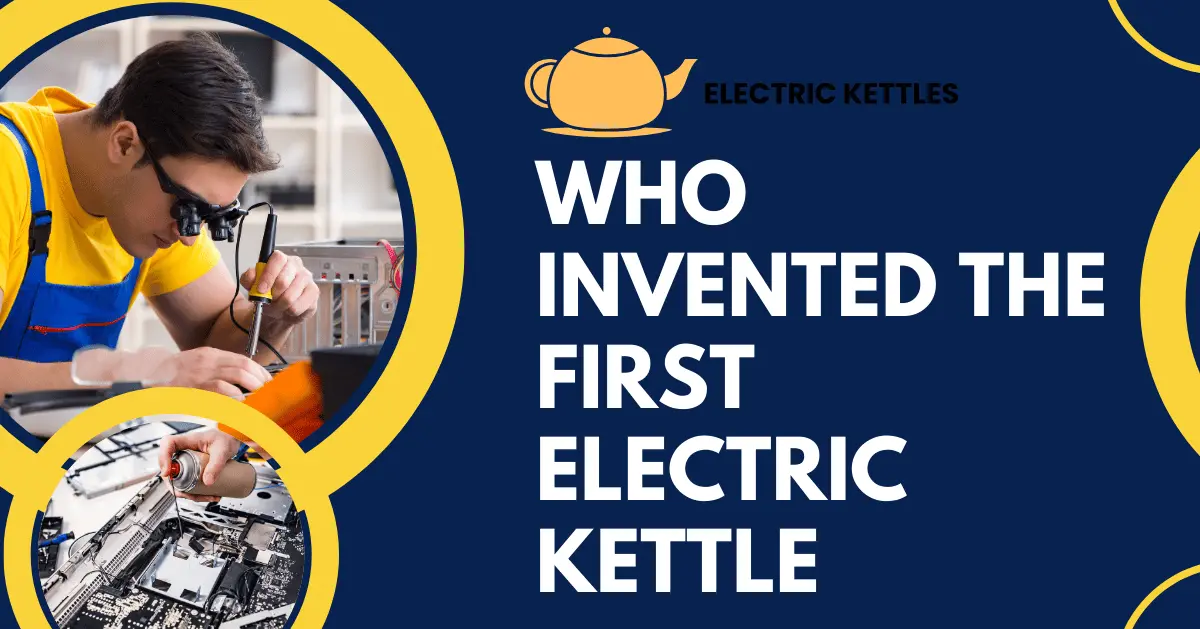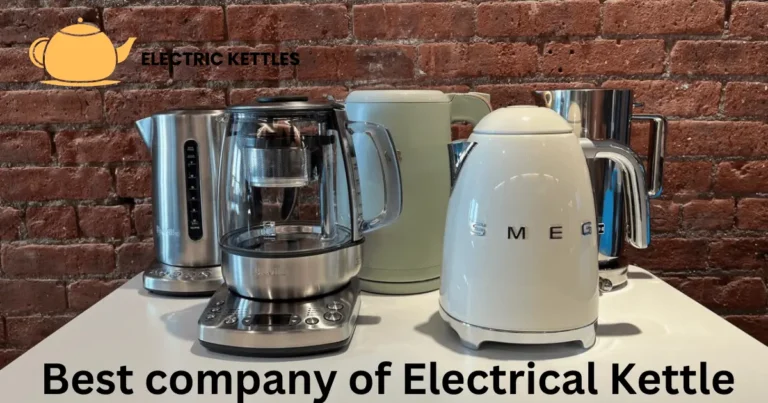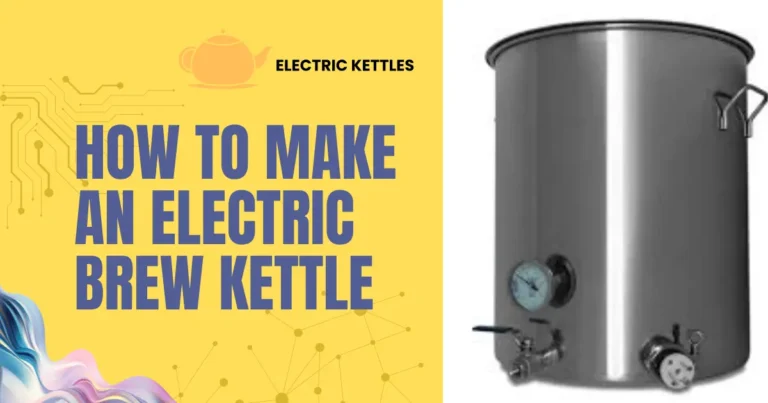Who Invented the First Electric Kettle
Electric kettles are appliances used to boil water quickly. They are powered by electricity and usually come with an automatic shut-off feature when the water reaches boiling point. Most modern kettles are designed to heat water efficiently and safely. They are popular in homes and offices for making tea, coffee, and other hot drinks. The design has improved over time, making them more energy-efficient and faster.
The invention of the electric kettle made boiling water easier and faster. Before, people used stoves, which took more time and energy. Electric kettles have helped save time in daily routines. Their automatic shut-off feature also improves safety, reducing the risk of accidents from overheating.
Table of Contents
Early History of Kettle Use
Kettles have been around for thousands of years, with their earliest use traced back to ancient cultures like the Egyptians and Mesopotamians. These early kettles were made of clay or metal and were used to heat water over open fires. They were essential tools in households for cooking, making hot drinks, and even for medicinal purposes. The process, however, was slow and required close attention to avoid overheating or accidents.
By the 17th and 18th centuries, as metalworking techniques improved, kettles became more durable and efficient. Copper and iron kettles were commonly used, and they could heat water more evenly on open hearths or wood-burning stoves. However, these traditional methods still took time and effort, as users had to manually monitor the heating process. The shape of the kettle also began to change during this time, with the addition of spouts and handles for easier pouring.
The Industrial Revolution in the 19th century brought significant changes to kettle use. With the introduction of gas and coal stoves, the design of the kettle adapted to these new heat sources. Kettles became a common household item, especially in Europe, where tea culture was deeply rooted. However, despite these advancements, the basic principle of boiling water over a heat source remained unchanged.
The First Electric Kettle Invention
The first electric kettle was invented in 1891 by the British company Crompton & Company. It was a groundbreaking innovation that replaced traditional methods of boiling water on stoves. This early version of the electric kettle used a simple heating element inside the kettle to warm the water. However, the heating element wasn’t submerged in water, which made it less efficient than modern designs. Despite this limitation, it marked a major shift toward using electricity for daily household tasks.
In 1922, the Swan Company improved the design by introducing the first electric kettle with a fully immersed heating element. This change made the kettle more efficient and faster at boiling water. Over time, safety features like automatic shut-off were added, making electric kettles not only more convenient but also safer to use. This innovation revolutionized kitchen appliances and made boiling water quicker, easier, and more reliable than ever before.
Notable Contributors and Innovators
The invention and development of the electric kettle involved several key contributors and innovators. While Crompton & Company made the first electric kettle in 1891, it was the work of multiple companies and inventors that led to the modern electric kettle we know today.
In 1922, the Swan Company made a significant breakthrough by creating the first kettle with a fully immersed heating element. This design innovation allowed for faster boiling and greater efficiency. Swan’s contribution greatly improved the usability and effectiveness of electric kettles, making them more practical for everyday use.
Russell Hobbs, founded in 1952, is another notable name in the development of electric kettles. In 1955, they introduced the first automatic electric kettle, the “K1,” which included a thermostat that turned the kettle off once the water boiled. This innovation not only enhanced safety but also made electric kettles even more convenient, leading to their widespread popularity.
The Role of Technology in Electric Kettle Innovation
Technology has played a critical role in the continuous improvement of electric kettles. Early models used basic electrical elements to heat water, but over time, advancements in materials and design have made them more efficient and safer. One of the key innovations was the development of the immersed heating element, which improved how quickly and evenly water could be boiled. This change allowed electric kettles to become faster and more energy-efficient, saving time and reducing power consumption.
Safety features have also evolved thanks to technological advances. The introduction of thermostats that automatically shut off the kettle when the water reaches boiling point was a game-changer. This feature not only prevents overheating but also makes the kettles safer to use. Further developments have led to kettles with boil-dry protection, which stops the kettle from heating if there’s no water inside. These improvements, driven by technology, have made electric kettles indispensable household appliances.
Impact of the Electric Kettle on Daily Life
The electric kettle has significantly changed the way people handle everyday tasks, especially in the kitchen. Before its invention, boiling water on a stove was a time-consuming process that required constant supervision. Electric kettles made this much faster and more convenient, allowing people to boil water within minutes with the simple press of a button. This efficiency has made them a staple in households, particularly for making tea, coffee, or instant meals.
In addition to saving time, the electric kettle has enhanced safety in the kitchen. Automatic shut-off features reduce the risk of accidents, such as boiling water overflowing or the kettle overheating. This has made it a reliable and worry-free appliance. The widespread use of electric kettles has also led to less energy consumption compared to traditional stovetop boiling, making them both eco-friendly and cost-effective.
Conclusion
The invention of the electric kettle has had a lasting impact on both households and daily routines. From its early beginnings in the 19th century to the advanced models we see today, the electric kettle has evolved through the contributions of various innovators. Key advancements, such as the immersed heating element and automatic shut-off features, have transformed it into a safe, efficient, and essential kitchen appliance.
As technology continues to advance, electric kettles are likely to become even more sophisticated, incorporating smart features and improved energy efficiency. This evolution reflects our changing lifestyles and the ongoing quest for convenience in the kitchen.







